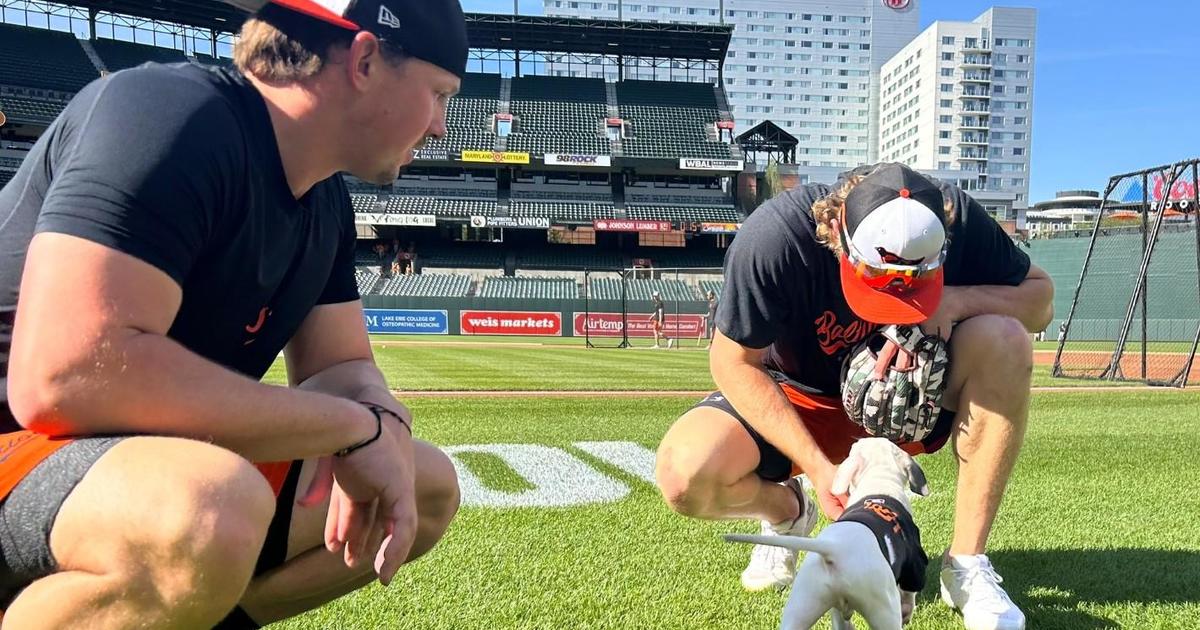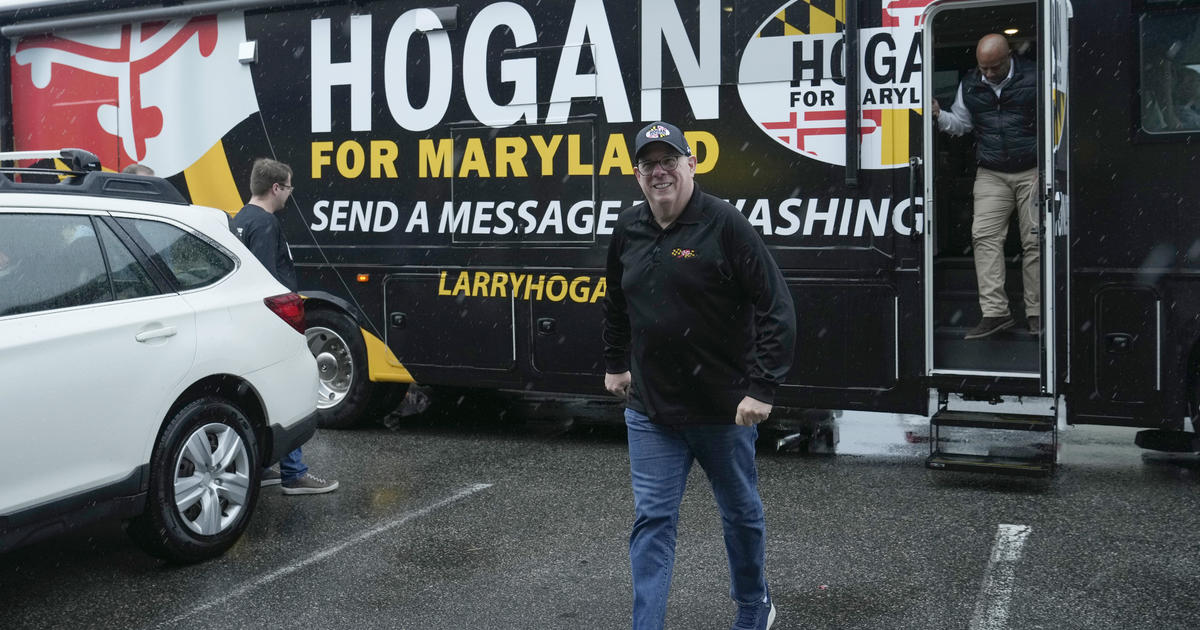Night Riders: Mountain Biking, At Night
KAREN GARDNER
The Frederick News-Post
FREDERICK, Md. (AP) -- It's nearing 7 o'clock on a November evening. The stars twinkle above the silhouetted treetops in Gambrill State Park. A crescent moon is out.
So are the mountain bikers.
These cyclists are getting ready for the first night ride of the season. Every Wednesday through April, while most of us are inside a warm shelter, a half-dozen or so mountain bikers are thumbing their collective noses at the cold and dark, riding the trail.
They don't just ride any trail. They ride Gambrill's legendary Yellow Poplar Trail, one of the more difficult mountain bike trails in the Mid-Atlantic region. It's difficult even in daylight. The seven-mile loop has 1,400 feet of elevation change.
"This is advanced riding out here," said Brad Walker, of Hagerstown, as he readied his bike for the night ride. He was not bragging. He was simply stating the truth of the difficulty level.
Mountain biking is not for the faint of heart. To start with, cyclists must be in good physical condition. They need to tough out lung-searing hill climbs, maintain balance and coordination during descents and not be afraid to lift their front wheels over rocks and logs. They need to keep their cool during stream crossings, and be able to jump on and off their bikes with speed and agility.
Oh, and one is not a true mountain biker until one learns to do all that with shoes attached to pedals via cleats. These are known as "clip-less" pedals. A cyclist learns pretty fast how to do a quick release in case of a fall or particularly steep hill.
Some of the bikes are rigid, with no suspension, while so-called hard-tail bikes have front suspension, which reduces hand and arm fatigue. Knobby tires allow riders to travel over rocks and roots.
The bike rides are sponsored by the Mid-Atlantic Off Road Enthusiasts, a mountain biking club encompassing Maryland, Virginia and Washington, D.C. MORE, as the club is known, worked with the park administrators at Gambrill to coordinate the night rides. The Bicycle Escape, a Frederick bike shop, sponsors the rides. Shop owner Tom Rinker often rides along.
Leslie Litton, of Frederick, a store employee, adjusted the light on her bike helmet as she prepared for the ride. Helmets are required, as are helmet lights. Bike lights are recommended.
This was Litton's first night ride, but she wasn't worried. She's a veteran of the Gambrill trails.
David Kegley, of Germantown, has been doing the Gambrill night rides since they began about four years ago.
"I love it because it's more challenging," he said.
"It started because we needed to ride during the weekdays," said Todd Bauer, of Gaithersburg, who is part of MORE.
"It gets dark early, and I work until 5," said Darius Mark, of Frederick.
"It's impossible to get a ride in once daylight saving time ends," Bauer said.
About 10 years ago, MORE began sanctioning night rides in Virginia's Wakefield Park and Gaithersburg's Schaeffer Farm, part of Seneca Creek State Park. Schaeffer Farm, with its mix of wooded, somewhat hilly trails and farm fields, offers mountain biking for riders with intermediate skills.
Walker has been night riding at Greenbrier State Park for more than 20 years. He leads a Monday night ride for Frederick bike shop Bike Doctor at Greenbrier, in Washington County.
Most mountain bikers, like most people, have daytime obligations. Work, school and families keep them busy. But after dinner in the cold, dark months, these cyclists escape to a local park.
Informal night rides have existed for decades. Mark has been doing them since 1986.
"The lights weren't quite as good back then," he said.
Today cyclists of various skill levels can do night rides at Patapsco Valley State Park, Schaeffer Farm, Wakefield Park and other parks around Washington, D.C.
Patapsco now offers six night rides weekly, two separate rides, based on skill level, on three nights. One is for women only. The Patapsco rides require a ride leader and a ride sweep (last rider); the latter mast be first-aid and CPR certified.
Besides Schaeffer Farm, casual night rides are held in Little Bennett Regional Park near Hyattstown.
Gambrill rides, however, are the most advanced.
"Life insurance is strongly recommended," MORE's forum reads, only slightly tongue-in-cheek, referring to the Gambrill rides.
"Please bring your health insurance card, it comes in real handy when you have to visit the emergency room. Also bring your Road ID or dog tags so we know how to contact your next of kin. Emergency beacon or GPS locator is also good to bring. People have been lost for hours, and we are getting tired of calling for police helicopter assistance in finding people."
The forum also suggests dressing warmly because, "It tends to be a little colder on the mountain than down in Frederick."
Cold does not stop these riders. Neither does snow. Pouring rain is about the only weather condition that will cause a cancellation. Eighteen-degree nights only add another challenge, Walker said.
"Your CamelBaks freeze," he added, referring to the hydration system most mountain bikers carry.
"It gets a little slick sometimes," he said. Surprisingly, ice is rarely a problem. "This area repels water easily."
Gambrill's rock and hardpan soil prevents water from pooling on the trails to cause ruts and mud. Erosion rarely occurs.
"These trails are done correctly and they are sustainable," Litton said. "We can ride after a rain."
Technical clothing that wicks away the sweat helps riders stay warm into the single digits.
"It's the wind that bothers you," said long-time cyclist Joe Whitehair, of Frederick.
"We don't stand around much," Bauer said. "Once you get going, it's pretty good, except maybe for your hands and feet. Everyone's different there, depending on your circulation and all."
Flat tires, and they do happen, are changed quickly when temperatures drop below freezing.
Riding at night is peaceful, and snow makes the trail seem almost magical, Bauer said.
"You're on the trail, and it becomes completely different," he said. "Everything is still. You'll ride by the overlook and the woods light up with the city lights. That's when it becomes breathtaking."
The cyclists pedal past the city of Frederick overlook shortly after climbing the first hill on the Yellow Trail. Then it's a quick pass by some boulders before they descend into the seeming darkness, as the trail drops elevation.
The riders form a linear blur of lights in darkness, deftly maneuvering their wide, chunky bike tires over rocks, logs and fallen leaves. They do all this while staying on a trail that twists, turns and is little more than a foot wide in places. They dodge the occasional tree branch, and pedal up hills with the ease of a child sprinting in a game of tag.
Lights do help illuminate the blazes which mark the Yellow Trail, but these riders already know the route. They already know where the big rocks and roots are.
As they adjust their helmet lights before beginning the ride, the cyclists are unconcerned about the trail difficulty. Anyone who attempts the Gambrill rides should become familiar with the Yellow Trail in daylight. "Most of the people who come out here for the first time don't come back," Whitehair said.
The pace at Gambrill is fairly quick. "It's a faster pace," Bauer said. "We keep moving." Falls happen, but riders learn how to fall. "You just roll over the rocks," he said.
The rewards are great. "We've seen bears, owls," Walker said.
"It's pretty cool when an owl swoops the trail," Bauer said. "We see a lot of little eyeballs, and we don't know what they are."
The helmet lights are 700 lumens, providing a pretty bright light. Some cyclists put lights on their handlebars, but a helmet light is a must for night riding. "The light is where you're looking," Bauer said. Cyclists follow the adage, "Look where you want to be." The body (and bike) naturally follow.
Also, helmet lights make it easier to fix a flat.
The rides usually take about two hours; mechanical problems can add an extra half-hour, Whitehair said. Two hours for a 7-mile trail with hills and rocks might seem quick, but some riders add in another element.
Whitehair and Walker ride single-speed bikes. That means they don't shift into an easier gear to ride up a hill, or a stronger gear to power down a hill.
"We joke that we have three speeds: sit, stand or walk," Whitehair said.
"We're usually faster than the geared folks," Walker said.
"Most of us here race," Whitehair said.
They don't race at Gambrill, however. These riders are just happy to ride in the night.
(Copyright 2013 by The Associated Press. All Rights Reserved.)



